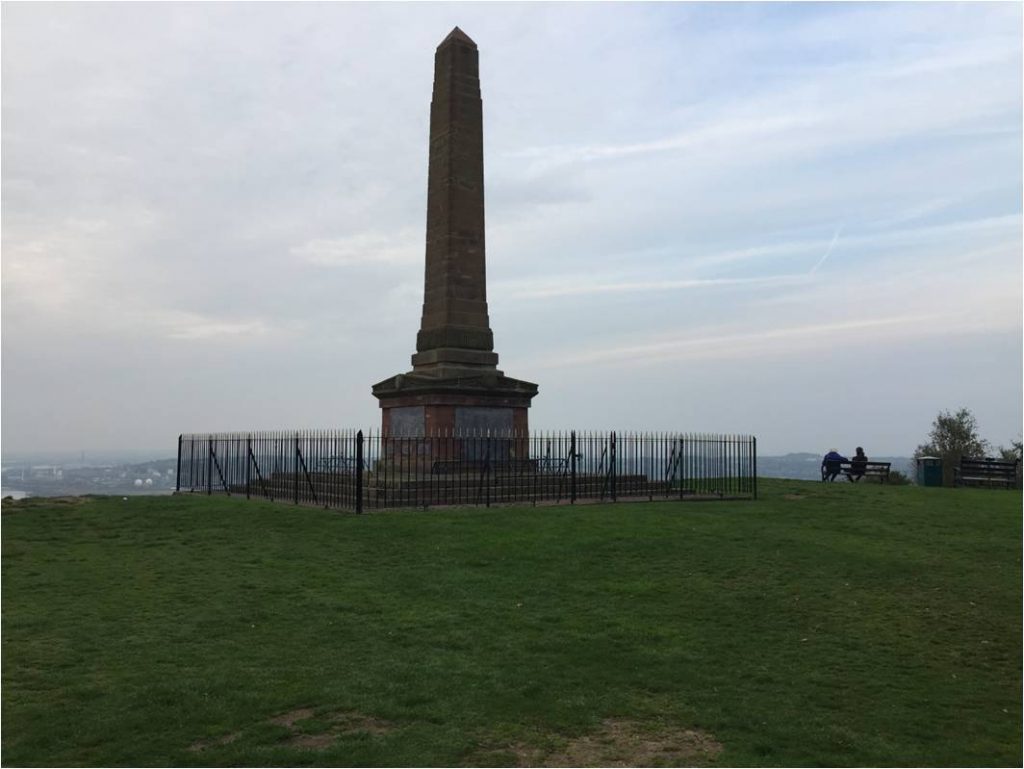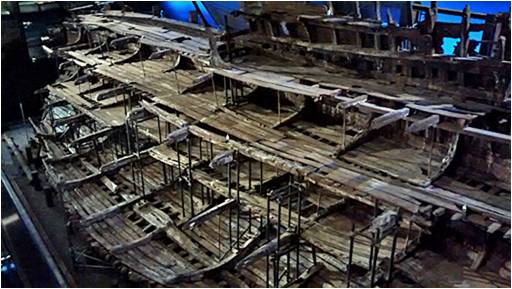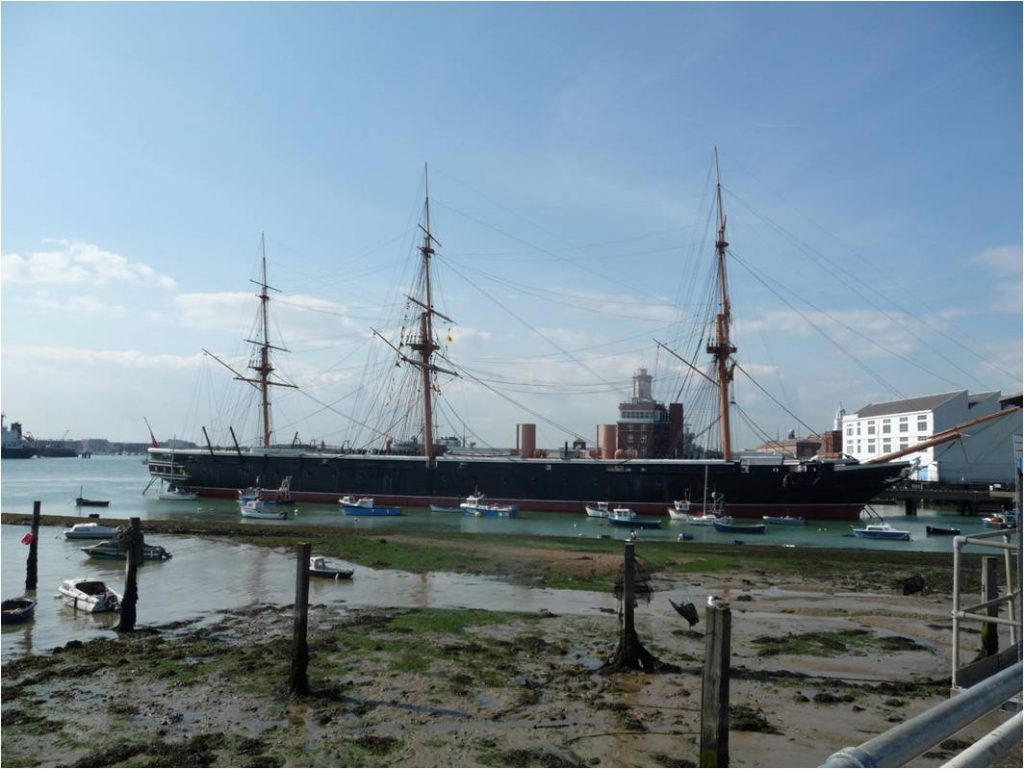
No. 611 February 2022 Edited by Andy Simpson
______________________________________________________________________________________________________________________________________
HADAS DIARY – Forthcoming lectures and events
Due to the COVID-19 pandemic, until further notice lectures will be held online via ZOOM, starting at 8.00pm (EXCEPT FEBRUARY), although we do hope to get back to face to face lectures soon.
As ever, our apologies to those who are unable to see online lectures. We will of course be sending out an invitation email with instructions about how to join on the day of each talk, so do watch your inbox…
Tuesday 8th February 2022. The Dorothy Newbury Memorial Lecture (2.30pm – Note early time).
Jacqui Pearce (MOLA) – The Consul’s china: Regency period finds from America Square, London
NB – ZOOM only – no social event at Avenue House.
Tuesday 8th March 2022
Dr Martin Dearne (EAS) – Monarchs, Courtiers, Technocrats and Kitchen Boys; Bringing Elsyng Palace to Life.
The lost Elsyng palace, in the grounds of Forty Hall, Enfield, has of course been the subject of extensive annual excavations by the Enfield Archaeological Society since 2004. To quote the EAS website; This lecture will help us get to know the life stories of those who lived and worked at Elsyng Palace. These have been the subject of many years of archive research soon to be published as part of a major monograph, and this is a chance to hear about some of these people and what has been involved in trying to dig into their lives.
Tuesday 12th April 2022
Dr Martin Bates (University of Wales Trinity Saint David) – London in the Ice Age; changing environments and human activity
Tuesday 10th May 2022
James Wright – The Folklore and Archaeology of Historic Buildings
Tuesday 14th June 2022
ANNUAL GENERAL MEETING
Tuesday 11th October 2022
Dr Martin Bridge (UCL) – Tree-ring dating, and what it tells us about the old Barnet shop.
Tuesday 8th November 2022
Nick Card – Building the Ness of Brodgar
1
Richard III and the ‘Princes in the Tower’ Steve Green
Retired ex BR long-time railwayman Steve is a fellow member of the 1930s ex-District Line Q Stock train restoration team at the London Transport Museum Acton depot. He is also a keen member of The Richard III Society
Richard III Society | ABOUT US
In December 2021 news emerged that research suggests that at least one of the young Princes, Edward of York, may have lived on under a false name – in a village in Devon, rather than being murdered in the Tower of London on the orders of his uncle, Richard III, as is popularly believed.
This is part of an ongoing ‘Missing Princes Project’ investigation led by Philippa Langley of the ‘King in the car park’ fame (as discovered in 2012) – so she might be on to something here.
When the elder Prince, the 12-year old ‘Edward V’ was deposed in favour of his uncle Richard Duke of Gloucester (Richard III) being that his father had a pre-contract with another woman (Eleanor Talbot) therefore making the children illegitimate (under medieval law) and therefore not able to access the throne – there is strong evidence to prove Richard’s actions in this respect were correct.
The rumours that the two Princes were murdered were around at the time – mainly pursued by those with a vested interest in deposing Richard including the French who no longer wished to pay an annual pension to the King of England to prevent a further invasion by the English to claim what they perceived as their territory – hence Henry Tudor in exile in Brittany, later in France, made an ideal candidate with his somewhat dodgy Lancastrian heritage to oppose the Yorkist regime indeed invaded via Wales claiming his Welsh family roots to raise more troops to assist the professional trained army supplied by the French which along with his band of Lancastrian exiles with the betrayal of the Stanley brothers (Thomas Stanley was married to a Tudor’s mother) led to Richard’s defeat and death at Bosworth, and hurried burial in Leicester.
The princes’ mother Elizabeth Woodville went into sanctuary with the younger Prince and their sisters at Westminster when she heard that Richard had gained control of the elder Prince with his coup at Stony Stratford. Richard believed there was a plan to install the Prince as the King. The former Queen’s family (the Woodvilles) would rule through him thus deposing Richard of his role of protector designated to him by the Prince’s father (Edward IV) – remember that the elder Prince was not old enough to rule in his own right.
After various events in London, Richard was proclaimed King in July 1483 – the elder Prince and eventually his younger brother, the nine-year old Richard of Shrewsbury were housed in the Tower of London – nothing sinister in this as this would be the normal residence for a medieval prince before preceding to his coronation at Westminster Abbey, the tower’s reputation as a prison coming much later during the Tudor reign.
2
Elizabeth Woodville remained in sanctuary, but in March 1484 agreed to leave it with her daughters which is a bit bizarre if she believed Richard had murdered her sons. However, it was agreed that Richard would make suitable marriages for her daughters and suitable provision for her.
Along with the rumours that the Princes were murdered, there were various rumours of their survival mostly in Tudor reigns with the so called ‘Lambert Simnel’ rebellion in 1487 and later ‘Perkin Warbeck’ so therefore it’s sufficient to say that it’s possible to assume that one or both of the Princes survived. Remembering that prior to the death of his brother Edward IV, Richard was extremely loyal to him – further that the deposition of the Princes due to illegitimacy was in accordance with medieval law, he did not need them dead – but any other claimant would.
Also remember that the Shakespeare play Richard III (brilliant as it is) was written over a 100 years after these events – at that time England had undergone religious reformation, was under threat of foreign invasion and had an ageing Queen with no heirs. Her principle advisor, Robert Cecil, who incidentally had a hunchback, was at the centre of government pursuing polices that might not have stood well with some of her subjects, so perhaps Shakespeare’s Richard III was a cypher for Robert Cecil – audiences of the time would have understood that. Therefore, quite a bit that has come down to us about the disappearance of the Princes is based on drama not history even if some of that drama is based on what was believed to be historical fact.
The Princes Not in the Tower?
As a further point, this might provide some answers to so called ‘bones of the Princes’ discovered in 1674 subsequently placed in an urn in Westminster Abbey.
Workmen digging out the old stone stairs to the White Tower found some bones which they initially threw on a rubbish tip which were later retrieved and placed in the urn on the orders of King Charles II believing they were the bones of the two Princes.
A forensic examination took place in 1933 with the preconceived idea that they were the remains of the Princes. However, the results of that examination would not stand up with today’s more advanced methods DNA etc. No effort was made to decide gender. Certainly, on the evidence provided, the same investigation today would possibly conclude one of the skeletons was female. Human remains have been found on the site of the Tower of London throughout the ages remembering that the area has seen human habitations since the Iron Age, the depth at which the bones were found lends itself to that conclusion.
According to Thomas More in his ‘History of King Richard III‘, published in 1513, the murdered Princes were interred below a stair deep in the ground – where the bones were found. However, he goes on to say King Richard took pity on them and ordered a single priest to remove them somewhere else for burial – a somewhat Herculean task for a single man in the middle of the night and no one noticed! This is repeated in Shakespeare who borrowed heavily on Thomas More for his play.
The point is that the workman found some bones where Thomas More indicated, but according to More they didn’t remain there so something isn’t right. Further, Thomas More in his account, if you read it carefully, does not emphatically say they were murdered although he does name the persons responsible to the extent that one of them was still alive and “walked abroad ere he be hanged”.
I should add on one occasion some remains were found that were believed to be the Princes but were later found to be those of a gorilla! It should also be born in mind that the Tower of London was for many years home to a considerable menagerie including lions, an elephant and even a polar bear.
3
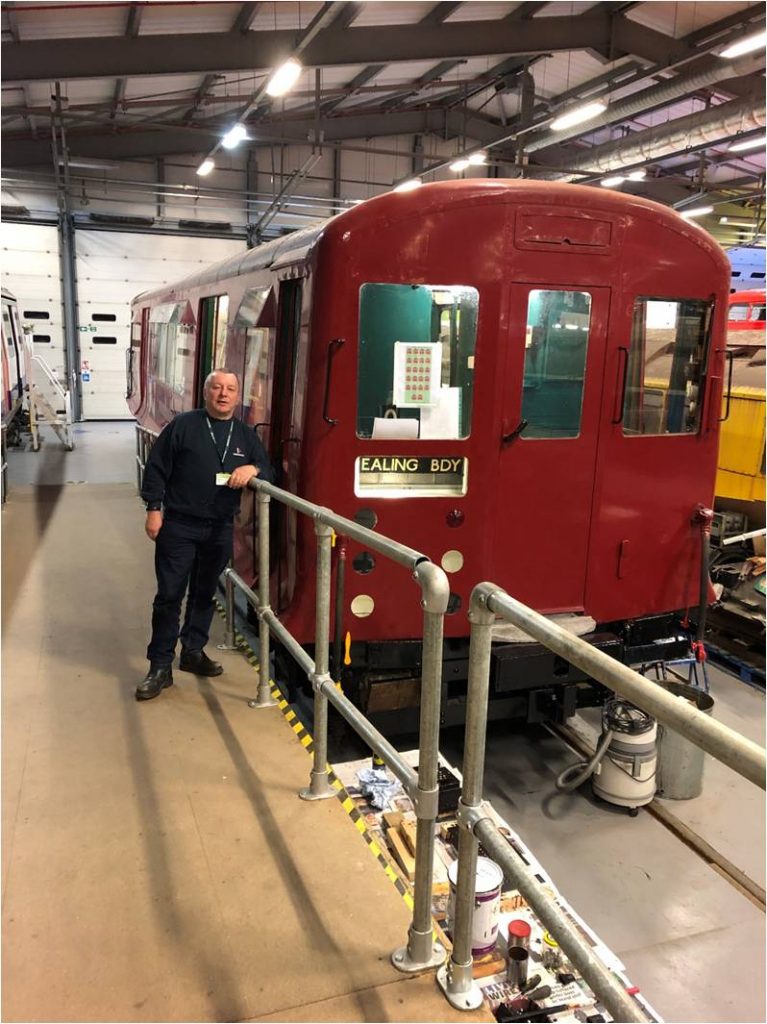
Photo; Frank van den Boogert. See ‘Transport Corner’ for more details.
Covid permitting, there are regular public open weekends (including 21-24 April 2022) and guided tours at the Museum Depot.
You may even meet some of the Q Stock restoration team.
See What’s on | London Transport Museum (ltmuseum.co.uk)
4
In search of the Rutland Dinosaur Janet Mortimer
Rutland has certainly been put on the map recently in archaeological terms. In the smallest County of England not only has been found a magnificent Roman mosaic, described by Historic England as “one of the most remarkable and significant found in Britain” but also the largest and most complete fossil of an ichthyosaur. Both of these remarkable finds feature in the excellent Digging for Britain series on BBC2.
Rutland holds a special place in my heart as not only does my dear friend and fellow HADAS member, Barbara Thomas, live there, but we also spend an idyllic week there every year at her timeshare lodge at the edge of Rutland Water.Wildlife abounds there with multitudes of wildfowl on the water, attracting many Twitchers for the annual Bird Fair (sadly now defunct due to the effects of the Pandemic). It is home to the first Osprey breeding programme and is even apparently home to the mythical Rutland Panther, who we always keep a wary eye out for whilst walking in the woods. We haven’t seen it yet but no doubt if we do, we will take a suitably blurred photo with no size perspective that seems to be the norm for those sort of occasions.
Normanton Church is an iconic landmark , partly submerged when the land was flooded to make Rutland Water. Some years ago we visited there as it housed a small museum and we both remembered seeing something in there about the Rutland Dinosaur. We wanted to know more about it so decided to revisit it last year. We were very disappointed when we arrived to find it closed, and now only used as a wedding venue. We asked around as to what had happened to the exhibits and were told that they were taken to the Visitors Centre at Egleton. We duly drove there and the Visitors Centre was a glorified shop. We asked at the counter whether they had the finds from Normanton and were directed towards some drawers which contained a mixture of very interesting fossils, bits of Roman pots and prehistoric artefacts which they were quite happy for us to handle, but no dinosaur. The lady at the till suggested we try Oakham Museum.
So, Oakham Museum was our next stop. This is a smallish museum which contains an interesting few cabinets dedicated to the history of Rutland with items from prehistoric times, through Romans and Saxons and onwards. Sadly again there was no dinosaur. The lone Museum attendant didn’t seem to have heard of it, but suggested it may be at Leicester Museum.
As luck would have it, a few days later I had a problem with my eye, which necessitated a trip to Leicester Royal Infirmary. After treatment we decided to walk back to the station but as neither Barbara nor I have any sense of direction, we got lost and ended up walking right past Leicester Museum.
So of course we went in to see if they had the errant dinosaur. Near to the entrance they had the Dinosaur Hall. In the middle was a very large dinosaur, with cabinets containing bones and finds around it. We looked in all the cabinets, but again no Rutland dinosaur. Disappointed, we went to ask the lady at the front desk if they knew where it was. She said “Yes – in the Dinosaur Hall – you can’t miss it”. So we explained that we had looked in there but couldn’t see it, and she again said with a smile “You really can’t miss it!”. Then the penny dropped…..it was the very large dinosaur in the middle of the room – the star display. So we tracked him down in the end! So Rutland, the smallest County that half the country only knows from the Rutland Weekend Television programme or thinks was swallowed up by Leicestershire contains a wealth of interesting archaeology.
I am still trying to persuade Barbara to let HADAS dig up her garden in the hope that we may find more dinosaurs, sea dragons or Roman mosaics. Or even the Rutland Panther hiding in the bushes!
5
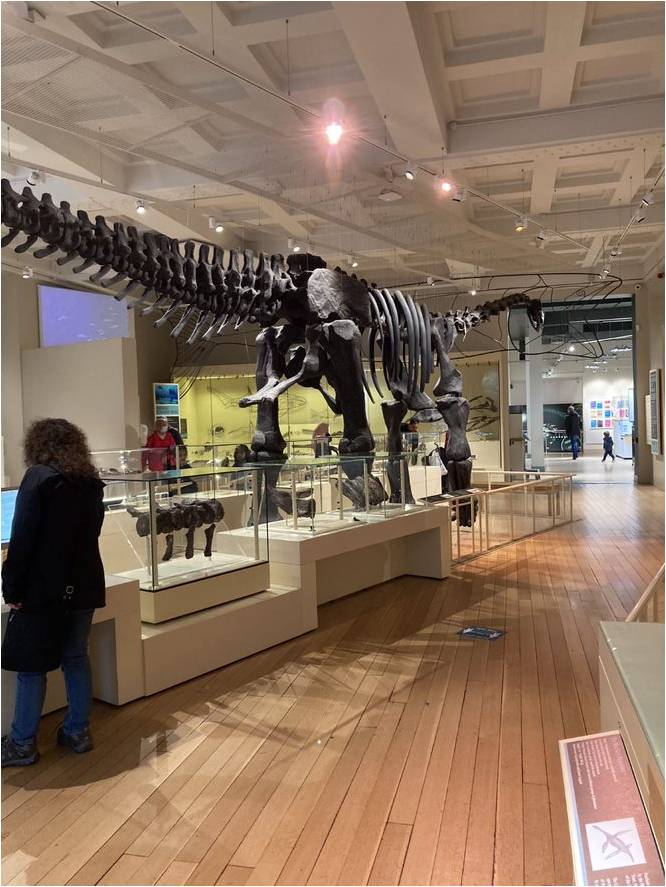
6
Frodsham Memories – the War Memorial Andy Simpson
When HADAS had its splendid trip to Liverpool, Chester and surrounding area back in September 2017, we stayed in a very pleasant hotel in Frodsham, Cheshire.
Just behind the hotel, on a headland overlooking the winding and refinery-lined estuary of the River Dee, was an impressive Grade II listed war memorial, also accessible from Bellemonte Road, Frodsham where there are memorial gates.
Recently found amongst paper at my late father’s house was the November 2009 edition of the Bulletin of the War Memorials Trust – www.warmemorials.org – which gives details of the history of the memorial and its English Heritage funded restoration in 2008-9, which involved extensive repointing and steam cleaning. Since then, however, deterioration has sadly continued. Standing in a prominent position at the top of Overton Hill, this large square red sandstone obelisk has fourteen slate inscription panels placed around the square pedimented base plinth,
The war memorial and the surrounding land were given to the people of Frodsham through its Parish Council by several local landowners to commemorate those from the Frodsham area who fell in WW1. The memorial was unveiled in October 1921, and also remembers the fallen of the 1939-1945 conflict with 105 names of WW1 Fallen and 34 from WW2.
Frodsham | War Imperial War Museums (iwm.org.uk) FRODSHAM (warmemorialsonline.org.uk)
7
Transport Corner – The Q Stock Project Andy Simpson
As mentioned earlier, as volunteer members of the London Transport Museum Friends organization, Richard III article author Steve Green and I are both involved in the long-term restoration to running order of a set of former London Transport District Line ‘Q Stock’ – 1939 built driving motor cars 4416 and 4417 with typical 1930s flared sided bodies, the survivors of 25 ‘Q38’ cars originally built, and more traditional clerestory-roofed 1936 built ‘Q35’ stock trailer car 08063, one of the last batch of clerestory-roofed railway vehicles for any railway in Britain. Until abolition of first class on the surface lines in February 1940 it was a composite 1st/3rd class car, back when London Transport also ran women only coaches on the Metropolitan line.
The work is being undertaken on behalf of the London Transport Museum, on Thursdays plus monthly Saturday working parties. Before being accepted to join the team back in early 2020, I and the rest of the new intake of Q stock project volunteers had to have a formal job interview by the Curator of Vehicles and Engineering and the professional Project Manager, including a practical element, involving identification and discussion of various electrical and mechanical components. After a lengthy hiatus due to the Covid pandemic, we restarted restoration work in August 2021. Other fellow retiree team members include senior LT engineers and even a Dutch civil servant. We also have some younger members still working.
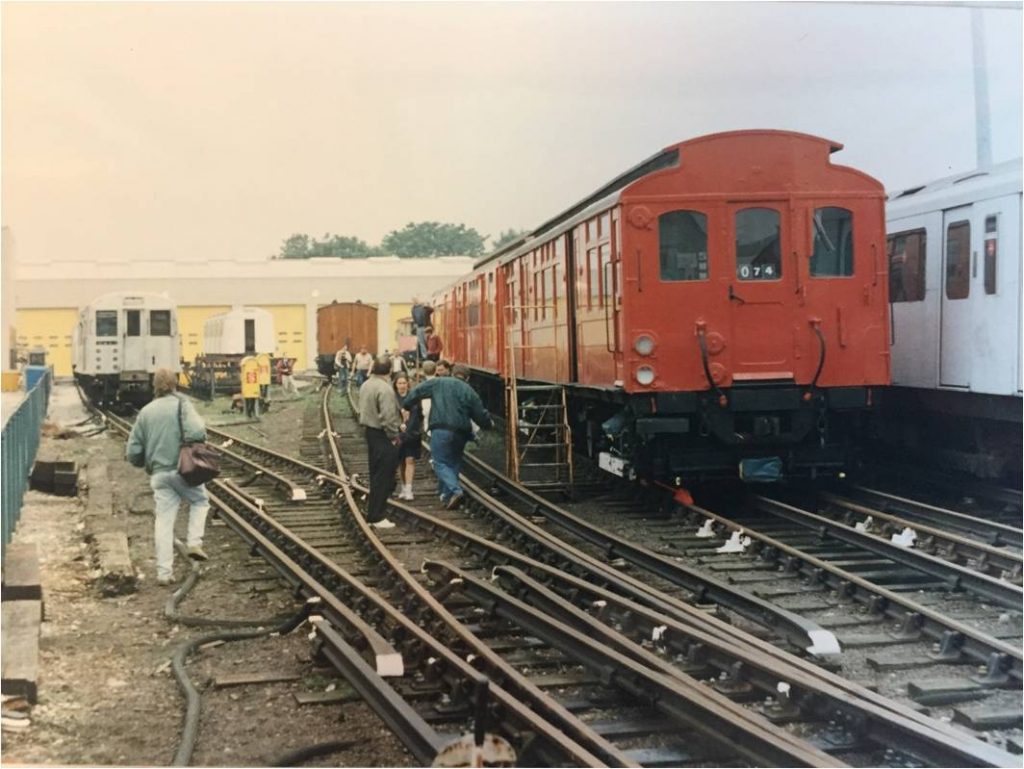
And who is that shoulder-bag carrying HADAS stalwart on the left? ?
8
Regular tasks include overhaul of electrical and mechanical components and woodwork/metalwork.
Also stored at Acton is 1923 stock driving motor car 4184, originally built as District Railway G class no.644, seen at Ealing Common depot in the above photo.
Q stock ran on the District line between Upminster and Wimbledon, and latterly the East London line from Shoreditch to New Cross, between July 1924 and September 1971, and was renowned for the variety of older cars that could make up a typical 6 or 8 car formation along with the 1938 cars. Cars 4416 and 4417 survived by being one of two pairs of Q38 cars retained as Pilot Motor cars for transfer of individual ‘dead’ cars and part units of surface stock not in train formation between depots and Acton Works , renumbered L126/7, restored from departmental yellow to original livery in 1990, and the current restoration project first began in 2005.
Q23 driving motor car 4248 can also still be seen, at the London Transport Museum at Covent Garden.
10 significant rail vehicles from our collection | London Transport Museum (ltmuseum.co.uk)
Summary of the January 2022 lecture over ZOOM to HADAS Don Cooper
by Alan Turton of the Mary Rose Trust.
Alan began his lecture by telling us about the Mary Trust, a charity, established in 1979 to preserve and display the hull and artefacts of the Mary Rose for future generations. He recounted the history of the Mary Rose, one of Henry Vlll’s warships. The Mary Rose was built in 1510 and fought in a number of sea battles mainly against the French during her long life in the navy. The ship was 35 years old when she sank in 1545, not newly constructed as is a commonly held myth. The ship’s gunners fired one broadside and was turning to fire from the other side when she heeled over and sank, with the loss of 450 members of her crew.
9
Over time, various attempts were made to salvage items from the wreck with only modest success. Then in 1971 the wreck was located and in 1979 the decision was made to salvage her.
Alan described the recovery of much of the ship, a difficult enterprise and watched on TV all around the world. The recovery was carried out under the patronage of Prince Charles. The ship was lodged in a local building so that it could be dried out and conserved.
Eventually the ship and the recovered artefacts were displayed in a purpose-built museum
Alan showed slides of the most interesting items which told the story of the lives of the sailors and their possessions.
This was an excellent lecture by a speaker who thoroughly understood his subject.
See also
The Mary Rose – Favourite Ship of Henry VIII | The Mary Rose
and
The Mary Rose (historicdockyard.co.uk)
10
Other societies’ Events Eric Morgan
Please check with the society or organization before setting out in case of any changes or cancellations,
Tuesday 8th February, 8pm. Historical Association (North London branch,). Meeting on zoom. Contact branch sec. for details at robin.blades@outlook.com. Non-members free. The Eastern Front 1914-18. Talk by Dr. Nick Lloyd.
Wednesday 9th February, 2.30pm. Mill Hill Historical Society. Trinity Church, 100, The Broadway, NW7 3TB. The Story of English Freedom. Talk. by Andi Thomas.
Wednesday 16th February, 2pm. The Friends of The City Churches. Please visit website at
http://london-city-churches.org.uk/
The lecture is on zoom via Eventbrite. Introduction to Heraldry. Talk by Rowan Freeland.
Wednesday 16th, February, 6.30pm. The Friends of Kensal Green Cemetery. Please visit website at www.kensalgreen.co.uk or email fokgc@hotmail.com. The lecture is online with tickets at £5 via website. The Cities of the Dead: Italy’s Monumental Cemeteries of the C19th. Talk by Dr. Hannah Malone.
Wednesday 16th February, 7.30pm. Willesden Local History Society. Messages from the Dead. Talk by Lorraine Evans. Exploring the rich social history of the architecture and monuments of the cemeteries in Willesden. Will be held on zoom, If not a member, buy a ticket (£3) https://tinyurl.com/y3whn
Thursday 17th February, 8pm. Bexley Archaeological Group. Talk on zoom. The Archaeology of the Thames Foreshore. By William Rathouse (Thames Discovery Project and MOLA). For log in link please visit www.bag.org.uk You may be charged £5.
Saturday 19th and Sunday 20th February, 12-4pm. Heritage Weekend at Lauderdale house, Waterlow Park, Highgate Hill, N6 5HG. Heritage fair, talks, performances, craft activities and more. Look into the past to unearth the fascinating history and heritage of Lauderdale house, Waterlow Park and the Highgate area. Please visit www.lauderdalehouse.org.uk or tel.020 8348 8716 or email
enquiries@lauderdale.org.uk
Monday 21st February, 8pm. Ruislip, Northwood and Eastcote Local History Society. The Restoration of Fulham Palace. Talk by Alexis Haslam (Community Archaeologist) Will be held on zoom. Please check website Ruislip Northwood and Eastcote Local History Society – Home (https://rnelhs.chessck.co.uk/) for log in link nearer the date.
Wednesday 23rd February, 7.45pm. Friern Barnet and District Local History Society. North Middx. Golf Club, The Manor House, Friern Barnet Lane, N20 0NL. Scouting: The 15th Finchley Scout Group. Talk by Frank Philip. Please visit website www.friern-barnethistory.org.uk and click on programme or phone 020 8368 8314 for up-to-date details (David Berguer, chair). Non-members £2. Bar available.
Thursday 24th February 7.30pm. Finchley Society. Drawing Room., Avenue (Stephens’) House, 17, East End Rd N3 3QE.Cricklewood and Hendon Airports (incl. Handley. Page) Talk by Hugh Petrie (Barnet Archivist) Non-members £2.at the door. Also on zoom. Please visit www.finchleysociety.org.uk
Also to register for zoom link. Refreshments in interval.
11
Friday 25th -Sunday 27th February. Current Archaeology Live 2022 Conference. To be held online with all talks going live on YouTube on www.youtube.com/c/currentarchaeology on Friday morning to watch in any order. To hear the latest news on the most important discoveries and leading research projects show-casing the Archaeology of the British Isles and beyond that have gone on during the past year. For more info on what the event will involve and how to sign up find the latest details on www.archaeology.co.uk/live. Julian Richards will be announcing the winners of the 14th annual Current Archaeology awards on Friday night. The Archaeologists of the year nominees are Prof. Martin Bell, Raksha Dave (current CBA President) and Dr. Peter Halkon. There are also the Research projects of the year, Rescue project of the year and Book of the year. There is also the Current World. Archaeology annual photography competition talk.
The https should be https://tinyurl.com/y3whn
______________________________________________________________________________________________________________________________________
With many thanks to this month’s contributors:
Bill Bass; Don Cooper; Steve Green; Eric Morgan; Janet Mortimer; Frank van den Boogert.
__________________________________________________________________________________________________________
Hendon and District Archaeological Society
Chairman Don Cooper, 59 Potters Road, Barnet EN5 5HS (020 8440 4350) e-mail: chairman@hadas.org.uk
Hon. Secretary Vacancy e-mail: secretary@hadas.org.uk
Hon. Treasurer Roger Chapman, 50 Summerlee Ave, London N2 9Q (07855 304488) e-mail: treasurer@hadas.org.uk
Membership Sec Stephen Brunning, 2 Goodwin Court, 52 Church Hill Road, East Barnet
EN4 8FH (0208 440 8421)
e-mail: membership@hadas.org.uk
Website at: www.hadas.org.uk – join the HADAS email discussion group via the website.
______________________________________________________________________________________________________________________________________
12

